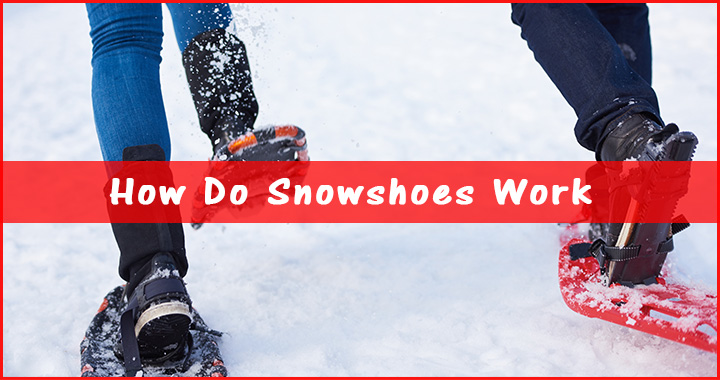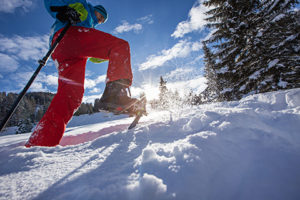Are you becoming a couch potato in winter months? The winter season doesn’t have to be a reason to keep you tied down at home. With a pair of snowshoes, you can be just as active as you are in the summertime. 
With a little knowledge of how do snowshoes work, you can even go running in the snowy terrain. Just keep your balance, and the next thing you know it, you’re having fun.
What are Snowshoes?
Snowshoes are specially-made footwear for walking on snow. They work efficiently by evenly distributing the weight of the person over the large surface area, making floating on the snow possible. Snowshoes have a wide and stable footprint and solid underfoot traction, promising winter fun a sure hit. Strapping on snowshoes allows anyone from a child to an aging adult to enjoy snowshoeing like a walk in the park.
How do snowshoes work?
Are you curious as to how do snowshoes work? You can saunter on a snowy terrain without getting any speck of snow on you with just snowshoes strapped at the bottom of your boots. Just do your normal stride, and off you go. It’s amazing how these contraptions work and keep a person from totally sinking into the snow.
The Physics of Snowshoes
 As mentioned before, snowshoes work by having a larger surface area under your feet. Wearing snowshoes allows snow to support your body weight from the bottom. It works even better than ordinary boots or tennis shoes in keeping a person afloat in the snow.
As mentioned before, snowshoes work by having a larger surface area under your feet. Wearing snowshoes allows snow to support your body weight from the bottom. It works even better than ordinary boots or tennis shoes in keeping a person afloat in the snow.
Using the well-known unit of measure for pressure, pounds per square inch, or PSI, snowshoes increase the surface area of a person to be able to walk on top of the snow rather than falling to the snowy ground. They basically distribute body weight over a wide area. However, heavier people or those carrying more stuff need to use bigger snowshoes. The idea is that the heavier the person, the more pressure to put on the snow. Thus, the size of the snowshoes is directly relative to the weight of the person.
Moreover, it’s not just the weight of the person that should be taken into consideration in using snowshoes but also the snow condition. Packed snow can take on more pressure than freshly-fallen snow. So, what works on a stroll on new flakes may be different from hiking on icy, steep terrain. Generally speaking, the lighter the snow, the more snowshoe surface area is needed.
How to Use Snowshoes
Access snow-covered ground with ease, whether to hike, climb or run. Setting off for snowshoeing requires minimal to no effort. The idea is like a normal walking but being wary of not stepping on the other snowshoe. You will get the hang of it eventually. Be prepared to experience a load of a workout by doing snowshoeing. Your body will exert more effort bearing the additional weight of a snowshoe on each foot.
So you don’t trip in your snowshoes on, make sure that the front of the snowshoes has more surface area and is lighter than the rear part of the snowshoes. Ensure that the front lip is always turned upward. With these features in check, you can prevent any unwanted tripping accident.
